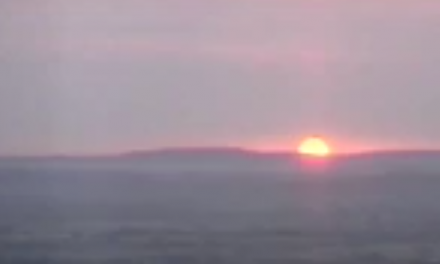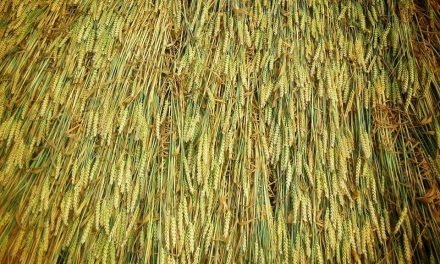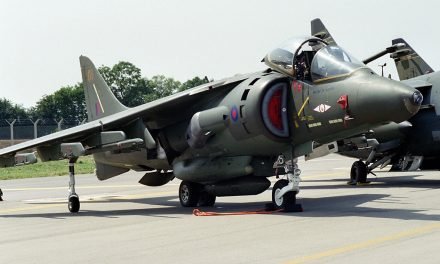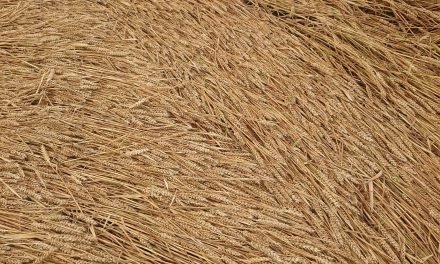
Operation Blackbird

INTRODUCTION
Operation Blackbird is deservedly renowned as one of the most genuinely iconic events in crop circle history. It enthralled the British public, massively dented the reputation of cerealogist Colin Andrews and, to this day, nobody believable has come forward to claim responsibility for one of the biggest yarns in the cerealogical record books.
Background
1989 was a watershed year for cerealogists Pat Delgado and Colin Andrews. Their book Circular Evidence was published by Bloomsbury in July, marking the first time a major publisher had tackled the crop circle phenomenon through an extended reportage.
The book was picked up by Simon Shaw, editor of BBC Pebble Mill’s popular Daytime Live show, and producer David Morgenstern, who decided to run with a feature that encompassed both the crop circle mystery — until then mainly covered in the press and lower key television stories — and the authors. During filming with Delgado and Andrews inside a circle at Firs Farm, Beckhampton, the camera and radio microphone equipment of the BBC crew began to suffer a series of glitches, including the presence of an unexplained audio interference. Footage of the weird happenings featured heavily in the completed feature on the cerealogists. Upon broadcast, the sequence captured the public imagination and provoked a flurry of calls and letters from viewers who had their own crop circle stories to share. Pebble Mill studio director John Macnish subsequently realised ‘how fantastic it would be if someone captured a circle forming on video for all the world to see’.
For the next six months, Macnish would be deeply involved in planning Operation Blackbird for July 1990. An arrangement was reached with Japan’s NTV (Nippon Television) — itself planning a similar exercise — in which it, and the BBC, would bring together a £15,000 budget and jointly run the cropwatch. Crop circle prone Bratton Camp near Westbury in Wiltshire was chosen as a suitable location. The land adjacent to the hillfort would house an array of recording equipment to monitor the fields below, whilst the base caravan would be manned with volunteers selected by Andrews and Delgado. The entire exercise would be held without fanfare or media coverage, a secret event hiding in plain sight. At least that was the plan until Macnish was seconded away from Daytime Live.
The Start
Commencing on Monday 23 July 1990, Operation Blackbird opened in a manner very different to the one envisioned by Macnish. Andrews and Delgado posed for photos next to Operation Blackbird’s bank of cameras and fielded questions from all quarters of the media. Delgado stayed on site overnight, re-emerging to deliver an update in the morning, albeit with little to say. Questioned by a reporter for BBC’s Breakfast Time, the former engineer remained confident that the time and effort being invested into Operation Blackbird would yield results; ‘We’re really set for the big event, which we hope will occur in this area.’
Delgado would be right, just not in the way he anticipated.
Speaking Too Soon
As darkness receded in the morning of 25 July, and drew in the first light at Bratton, volunteers in the Operation Blackbird control caravan noticed the shadowy outlines of a crop circle becoming visible in the maturing wheat of a field some 700m or so away. The circle makers, whoever or whatever they were, had chosen a field set well back behind Birchanger Farm on the single track Lower Westbury Road. Owned by farmer Jonathan York, the field was of a good size and backed onto the railway line that provided services between Westbury and Pewsey.
As the volunteers reviewed the footage from their thermal imaging cameras, they discovered a triangular formation of lights hovering in or around the field at around 3.30 am for something in the region of twenty minutes. At some point around 5.30 am, the Blackbird observers contacted Delgado and Andrews to alert them to the discovery.
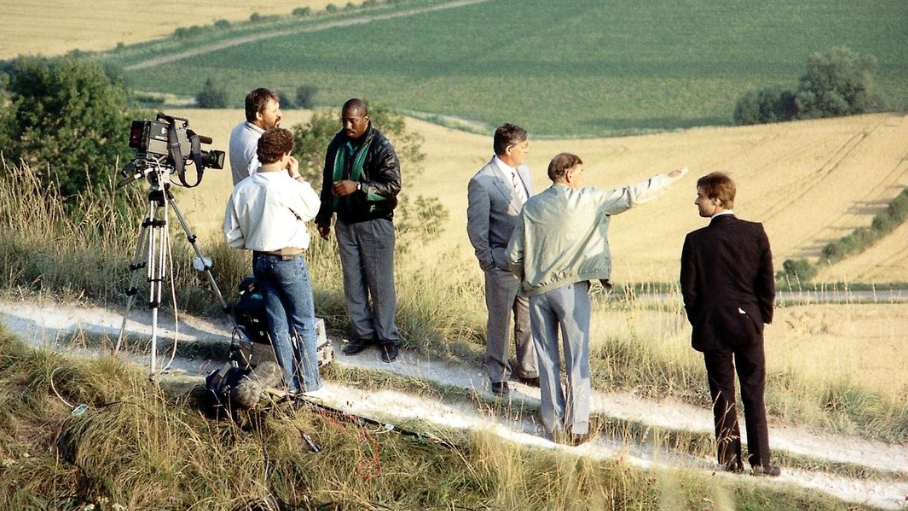
Pat Delgado with BBC weatherman Bill Giles in front of the cameras at the start of Operation Blackbird. Photograph via B1ackprojects
What happened as Delgado and Andrews drove to Bratton from Hampshire that morning is the stuff of legend. Popular belief holds that Andrews used his large cell phone to contact numerous media outlets, alerting them to the big news from the Operation Blackbird site. As word got around, an expanding pack of reporters from television, radio and newspapers hurriedly made their way to Wiltshire.
Also headed to Bratton was John Macnish, back on the Daytime Live crew from his secondment and a holiday in North Africa. Upon arrival, he was ushered into the control caravan and began to review the night’s footage. For more than two hours, with the throng of media people growing outside the door, Macnish studied the tapes. He noticed that, contrary to popular belief, the circles had not appeared in a blink of an eye. Instead, they seemed to have slowly manifested over two to three hours. Small dots could also be seen moving around inside the circles. Delgado seemed to agree that something was potentially amiss.
Outside, Andrews was speaking boldly to journalists on the night’s events. In one famous exchange with BBC Breakfast Time’s Nicholas Witchell, Andrews was pressed as to whether the new circle may have been a hoax. ‘No, not indeed,’ he explained, ‘we have high quality equipment here and we have indeed secured on high quality equipment a major event … We do have something of great, great significance.’
Under the morning sun, the formation was now clearly visible. Jim Schabel later observed:
‘The circles were very well defined, and they seemed to have been arranged in a symmetric pattern. At the top of the formation three circles lay in a row, the central one larger than the others, and dramatically ringed. Parallel with this row of circles and directly beneath them, were three straight lines, running perpendicularly to the field tramlines. Then further down were three more circles, arranged in a triangle, again with two small ones and one large one, the latter doubly ringed.’
As gawkers and members of the press-pack squinted to achieve a better look at the distant formation, those lucky enough to have access to binoculars or a telescope that was being passed around noticed some tiny blue splodges inside the circles. They seemed out of place. One site volunteer, Julie Blay, told Andrews and Delgado ‘how odd’ the blue dots seemed, ‘but they didn’t heed its significance.’
Zeroes and Crosses
As doubts to what the footage showed increased in the mind of Macnish, time ticked slowly by. Media staff became frustrated, demanding to know when a closer examination of the circles would be held. At one point, a BBC News reporter suggested she would seek authorisation from her bosses to seize the camera tapes from the Daytime Live team. It came to nothing, but as a precaution the reels were discreetly stashed in the boot of a car so they could be evacuated to Pebble Mill Studio, in Birmingham, where Daytime Live was produced.
With impatience growing, it was announced that Andrews and Delgado would enter the formation shortly after 10am. (Macnish subsequently claimed this late time was the consequence of endless delays in hauling the two cerealogists away from reporters. Jim Schnabel has suggested the 10am visit time had always been planned as part of Andrews’ Operation Blackbird protocol. Peter Rendall stated Andrews told the journalists he was calling that they had until 10am to get to Bratton Camp.)
Accompanied by crews from NTV and Daytime Live, the cerealogists made their way down to the Lower Westbury Road. A team of Operation Blackbird volunteers guarding the field from unwanted visitors stepped aside to allow the chosen few entry at 10.20am. Andrews and Delgado went in first, camcorders in hand. Andrews was equipped with a radio microphone to provide commentary. ‘It’s a ripened field of wheat,’ he noted in banal fashion.
As the pair made their way to the edge of the first circle, three light aircraft flew in low over the field, each laden with camera carrying passengers. The cerealogists paused, noticing both the aircraft and printed, blue paper discs inside the circles. For a brief moment, an air of tension split the usually tight researchers.
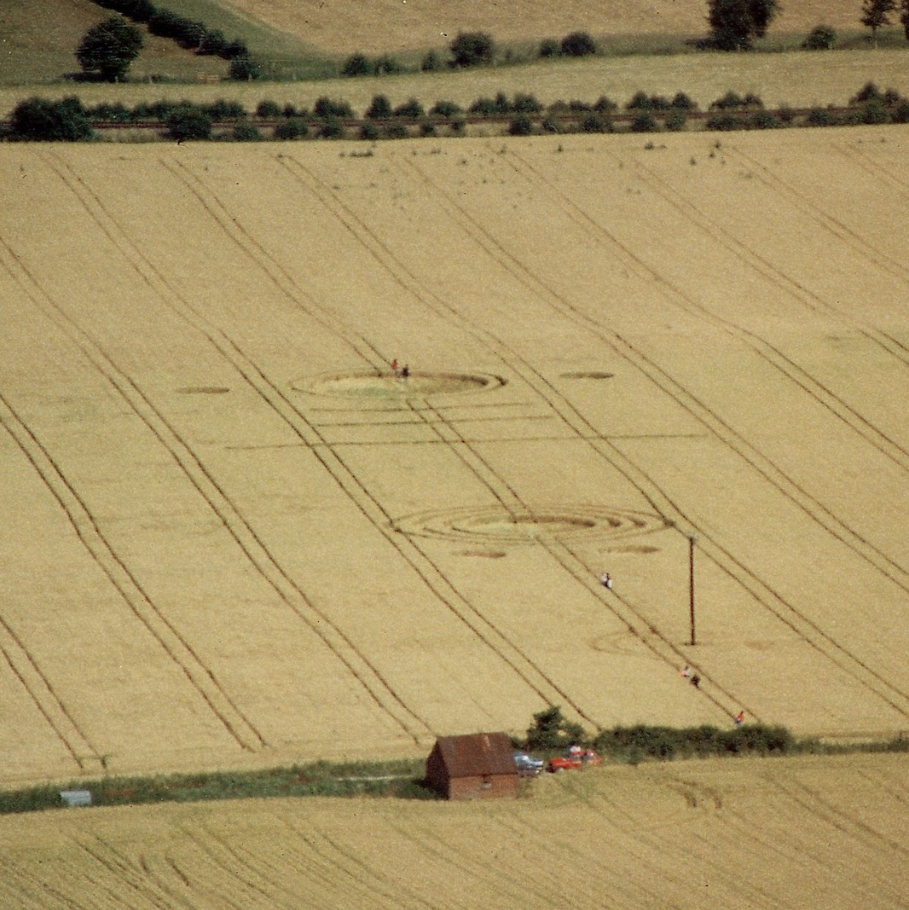
The now infamous Operation Blackbird hoaxed circle. Photograph via B1ackprojects
‘We’ve obviously had a fly-over from three aircraft at the appropriate time,’ muttered Andrews for his microphone. He sensed trouble. ‘It does look in every way at this time a hoax … I can see footprints.’
‘Someone,’ replied Delgado, ‘has either been here after the event or the whole thing is a hoax.’
‘Pat, how can you say it’s not a hoax?’ snapped Andrews.
‘Well, ummm…’
‘What we’ve witnessed,’ hissed Colin Andrews as the enormity of the situation crept up on him, ‘is the grand finale, this is a big paper story!’
‘Alright, alright,’ conceded Delgado. ‘Maybe.’
There was no way out for either man, despite Delgado’s belief the circle displayed certain aspects of what he then felt was the genuine phenomenon. Closer examination revealed the six blue discs, later wrongly identified as ouija boards by BBC News, to be playing boards from an obscure game. Six pairs of wooden sticks roughly tied into crosses were recovered by the two cerealogists. Members of the Daytime Live crew would also come across a long length of wire, presumably used to mark out the perimeter of each circle.
Improved Credibility
Rather than immediately return to the Operation Blackbird base, Andrews and Delgado retreated to The Duke pub in Bratton to confer on what had unfolded and how they would handle matters. After two hours, they made their way back to the caravan to face the media and explain how they had quickly seen through a hoax. They would come out hard, fighting to preserve their reputation and assure the public they really did know what they were doing. To quote from Schnabel’s Round In Circles:
Andrews did most of the talking:
‘As soon as I saw the edge of the first circle,’ he told the press, ‘I knew it was a hoax. It was damaged and ill-formed and the wheat had just been broken down. The game being left in the middle was just like someone’s calling card … I saw at once that we had an obvious hoax. The pattern is not consistent with the development of this perfectly genuine phenomenon, and an inspection on the ground showed very severe damage to the corn — bruising, severance, and disturbances consistent with human feet. This is quite unlike the pattern one sees in genuine circles …
‘I suppose we were already suspicious because of what we had seen on the video recordings. For a start, it took about twenty minutes for the circles to form when our research shows that real circles are there within seconds. But I feel very sad that someone has sunk to these depths … Whoever created these circles has demonstrated to young people that it is no bad thing to go on private property and destroy crops, and to hoodwink a serious research project …
‘This affair has just improved our credibility, however. We had £1 million worth of equipment which did its job. We were able to identify a hoax for what it was within seconds … our equipment can tell within seconds whether a ring is a hoax or not. The equipment even detected the heat from the bodies of the perpetrators …
‘Somebody has had a laugh. They have had a joke. Frankly, it is probably funny for about sixty seconds. Then I find it very very sad. They have only set the research back … This hoax was totally irresponsible. It was funny for about ten seconds …’
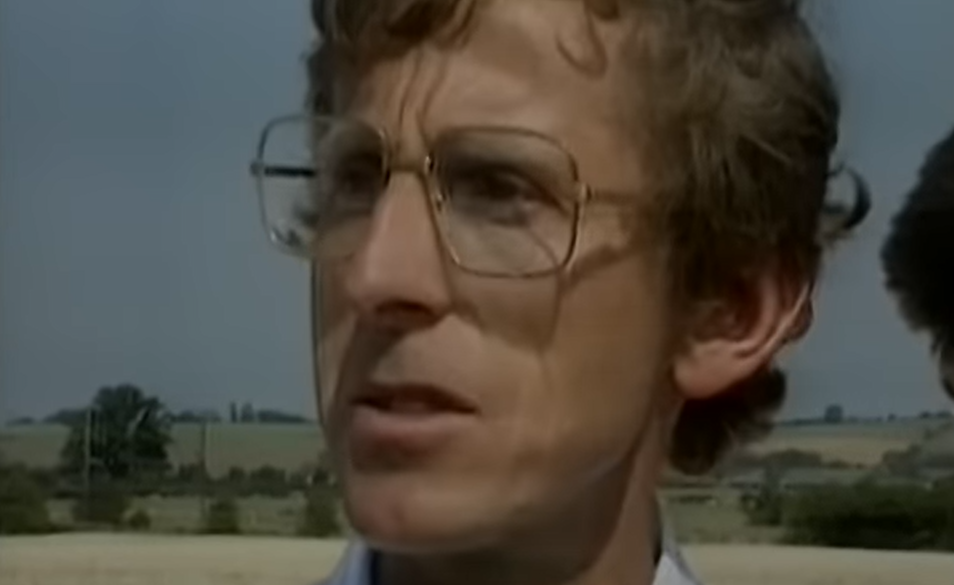
Colin Andrews defends himself in front of the cameras.
ITV reporter Vernon Mann, already sceptical of crop circles as anything but a man-made exercise, was not prepared to put up with any transparent face-saving exercise from Andrews. ‘Admit it,’ he put to the man who had been busy ringing around newspapers, television newsrooms and radio stations early that same morning, ‘you have been made to look complete fools. You were premature when you came out with the statements you gave this morning.’
Andrews certainly had been too quick to draw the media to Bratton Camp. Without any detailed analysis of the camera footage, without an inspection of the formation at ground level, his personal success hinged on there being a ‘genuine’ crop circle to share with the world. As there wasn’t, and given all of the fuss and hype he stirred up, Andrews was the creator of his own disaster. Had he been more understated in his approach, playing down any media queries he may have received on the way to Bratton Camp that morning, things could have been handled in a more dignified manner. Instead, he had created a spectacle that would severely damage his reputation. His peers, including those with axes to grind, did not shy from delivering kicks to their grounded rival in the coming months and years.
Within the pages of The Cereologist, George Wingfield wrote, ‘Colin’s initial statements were undoubtedly ill-advised, perhaps even unwise in the extreme.’ Peter Rendall in Cereal Killers was less restrained, observing ‘Andrews and Delgado had been ‘undressed in public’ as it were, and had suffered humiliation in front of the world’s media. Operation Blackbird had become ‘Operation Red Face’.’
‘It had taken seven hours for the nature of the trick to be realised, five hours of which were daylight hours,’ scoffed Terence Meaden in the Journal of Meteorology, ‘[this was] a dismal performance by any standards although not unexpected of nonscientific publicists who had worsened matters for themselves by proclaiming for three hours on live television that ‘this was a major, a really significant breakthrough.’’
We're Sorry
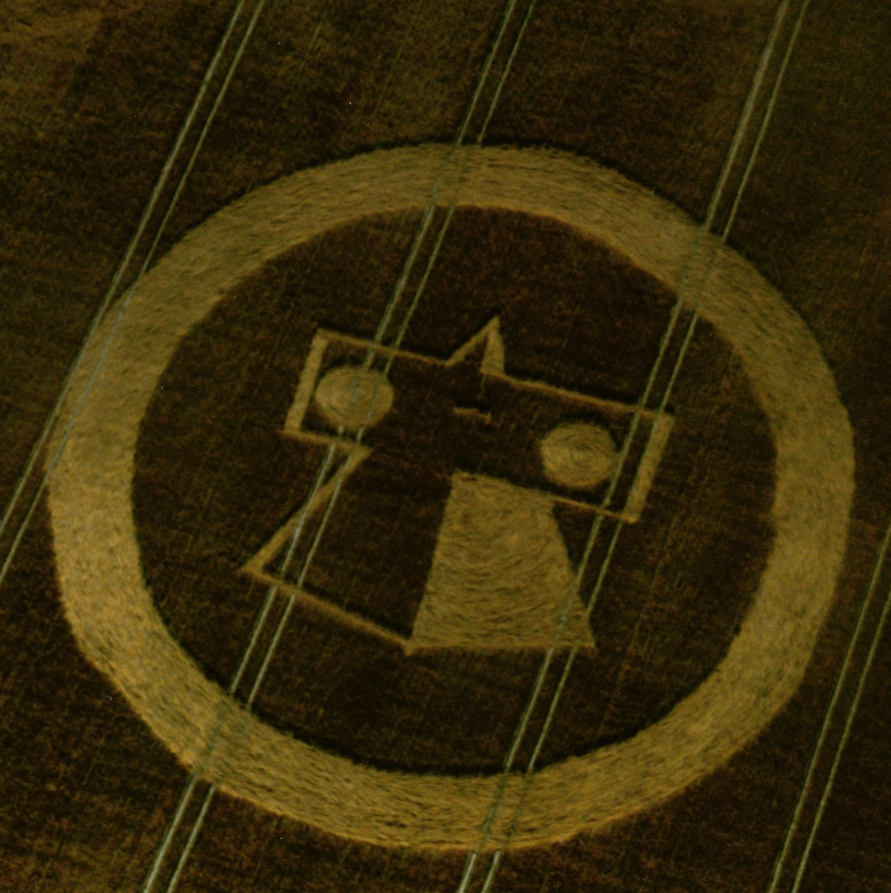
The KLF’s circle made for one of their music videos. Photograph via B1ackprojects
As the press began to head away from Bratton Camp, Andrews and Delgado had ample time to lick their wounds. The obvious question would surely have crossed their lips: just who would have gone to the lengths of creating such a monumental hoax?
Various names have come into the public domain at different times. These include George Vernon, otherwise known as Mystic Merlin, a self-proclaimed wizard from Bristol. A peculiar character, Vernon is the creator of the Crop Circles board game which he regularly hawked around pubs in the Wiltshire area and sold via mail order. It was the playing boards from this title that were discovered by Andrews and Delgado in the circles. He was soon quoted in the Sunday Sport, a scandal-rag famous for its ridiculous headlines, as being responsible for the affair. If the story filed by one B Ollocks is to be believed, Vernon confessed to having made the formation by rolling around in the crop.
Another name to have been mentioned, albeit away from prying ears, was UBI, a local team of circle makers implicated in the creation of the legendary East Field pictogram two weeks previously. They never claimed responsibility for either formation.
Ceralogist George Wingfield would later suggest the events at Bratton were hatched at ‘a high level in the MoD’, though it is hard to give credence to speculation from an individual renowned for his love of conspiracy theories.
Events, however, would quickly point the finger of blame in an entirely different direction. On 26 July, the day following the Blackbird furore, Colin Andrews received a curious letter through the post:
Colin,
the circles on Wednesday were just a hoax,
but we can’t help to play jokes.
Inconvenience caused? We’re sorry.
Catch us, you’ll have hurry.
Yours, in total control,
the Justified Ancients of Mu Mu — the Jamms
Try not to worry too hard.
We find it very funny,
While you sit back and rake in the money.
The letter ended with the message ’25 31 Wiltshire’ alongside the logo of the band the KLF … who also went under the names of the Jamms and the Justified Ancients of Mu Mu.
Had the popular band been behind the whole enterprise? It’s known that members Bill Drummond and Jimmy Cauty had an interest in the circles; at the end of the month they would make a crop circle version of their own logo for one of their music videos. Drummond, according to George Wingfield, was reportedly seen on White Horse Hill, close to the Operation Blackbird base site apparently wearing the disguise of ‘a long straggly beard … a ladies’ blue suede coat, a skirt and a bowler hat’. The KLF certainly held a reputation for pulling off some highly publicised stunts in the name of art. Most notably, in 1992, they deleted their entire back catalogue and burnt a million pounds of their own money.
It is impossible to say with any certainty who was responsible for the Operation Blackbird hoax, although the KLF remain the obvious suspects. Chances are we will never find out.
Blackbird Continues
Lingering memory associates Operation Blackbird with the events of 21 July, but the cropwatch did not come to an end with the humiliation of Colin Andrews and Pat Delgado.
At the end of the month, two new circles were discovered half a mile from the base caravan and outside of the range of the surveillance cameras. Observer Pam Price said that during the previous night she had heard an odd whooshing sound, and witnessed the appearance of a column of mist directly over the site of the new arrivals.
On 4 August, a new formation vaguely resembling a question mark was spotted by Blackbird volunteers as the sun came up, just beyond the railway line. Expectations the cameras would yield spectacular footage of the circle’s creation were short lived. One produced poor footage, another had moved out of position — possibly knocked by a sheep — and a third provided video initially deemed inconclusive. Further analysis of the latter utilising digital enhancement techniques revealed, according to John Macnish, ‘that whatever made the circle had moved on the ground, not through the air and that the movement roughly traced out the floor pattern of the formation.’ Additional examination of this video by NTV discovered a car resembling a Volkswagen Beetle in the vicinity of the field, off Capps Lane, where the question mark formation had appeared. Its presence had been betrayed by its lights as it headed away from the location. One can only speculate as to the motives behind its driver’s presence in such a remote location, so late at night.

Members of the Operation Blackbird surveillance team with Andrews and Delgado outside of the base caravan. Photograph via B1ackprojects
An offshoot of Operation Blackbird was Operation Nightingale, the brainchild of John Macnish after he noticed crop circles were still regularly appearing in other locations around Wiltshire. Due to Bratton Camp’s position adjacent to a MoD firing range, two army officers had been assigned to support the BBC in whatever way they were required throughout Blackbird. Macnish suggested they head off to other circles prone locations and conduct their own surveillance there. The pair did manage to record ‘an unidentified aerial object flying low on the horizon’ but seemingly missed out on the circle creation process. Nonetheless, Macnish says ‘they started to report large numbers of people wandering around Wiltshire in the middle of the night’, finding it ‘hard to believe that in the middle of the countryside so many people were out and about in total darkness.’
Legacy
Operation Blackbird quietly came to a close on 10 August with the drama of the previous month’s spectacle still embarrassingly fresh. Though it never produced anything other than an understanding that people can make crop circles, Blackbird has never faded from the minds of croppies who experienced it both up close and from afar. I was one of those who had never been into a crop circle at that point, a school child whose rare stops in Wiltshire were usually confined to half an hour sat on a bench at Swindon railway station, waiting for a connection back home. I can still hear the laughs of derision my grandfather and uncle levelled at Colin Andrews whilst watching the BBC Six O’clock News on the day of the hoax. I had so desperately wanted to believe that aliens were making crop circles. Nonetheless, I was able to carry on, telling myself this had been a dastardly trick played by someone who wanted to hide the extraterrestrial origins of the genuine circles. I had no idea who, or why. Not that it mattered.
The Operation Blackbird field monitoring exercise had been conceived as a low key operation to provide answers to the crop circle phenomenon. It had a sensible, sound base and built upon the intent of earlier cropwatches, most notably Andrews and Delgado’s Operation White Crow from 1989. For this exercise, cameras were positioned looking down into the Devil’s Punchbowl at Cheesefoot Head in Hampshire. However, that was where the positivity ended. The amateurish nature of White Crow was obvious; the organisers had chosen to observe a field of unsuitable crop, beans, and would spend the final hours of the watch spooked by a lively grasshopper warbler and the power of suggestion. Perhaps the BBC and NTV had not done their homework, or they simply thought they could bring Andrews and Delgado into line by restricting their roles.
Despite the best intentions of John Macnish, Operation Blackbird kicked off as a noisy, brash spectacle built upon publicity and heightened expectation. Whilst it isn’t clear how word got out, Andrews hardly shied from the media’s attention. He openly invited it. Events rapidly unfolded in a way that changed public perception of the show’s stars. Andrews and Delgado morphed from likeable, technically minded men into shambolic, misguided amateurs. The editors of broadsheet newspapers and television news programmes felt the same, largely giving serious coverage of the circles a wide berth until Doug Bower and Dave Chorley spilled all in September 1991.
Ultimately, it is perhaps the humiliation and bluster of Andrews, alongside the ridicule projected at the somewhat tragic, understated Delgado, that has burned Operation Blackbird into the croppie psyche. The events that surrounded these two men will forever outweigh anything learnt during that fateful cropwatch at Bratton.


